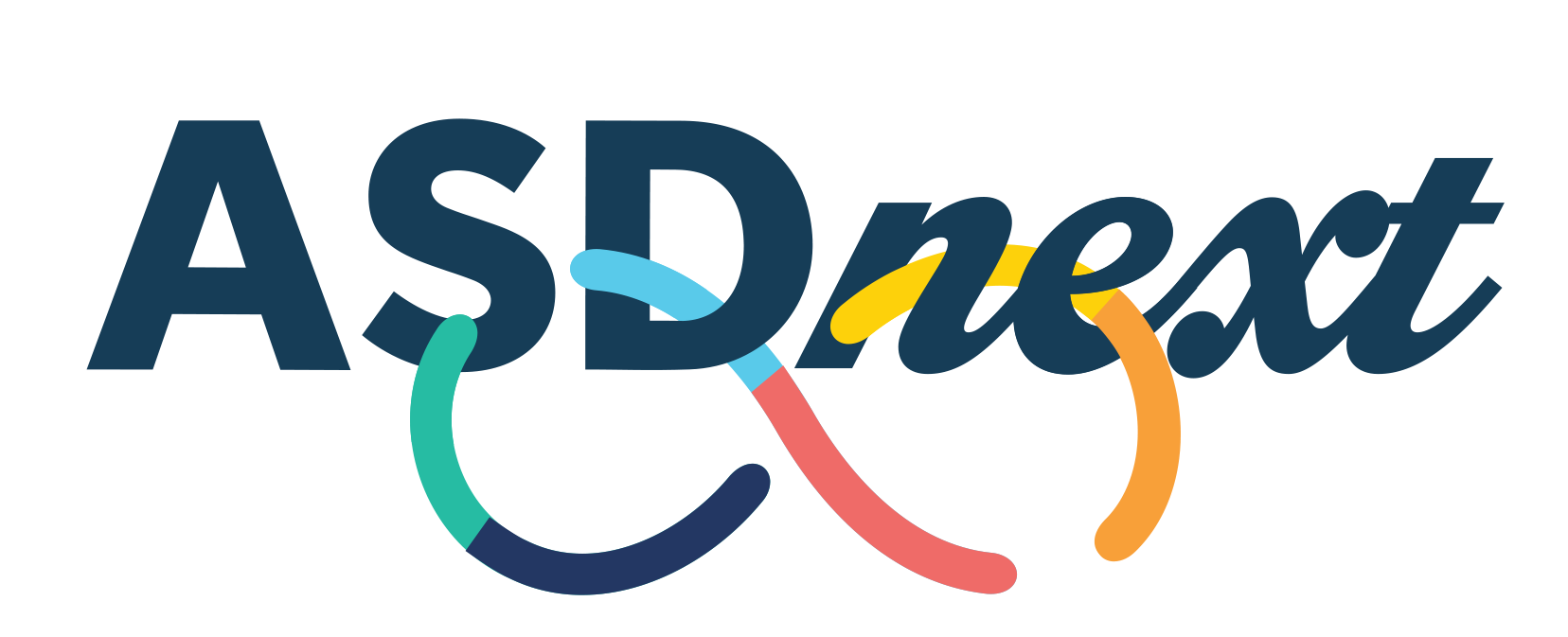Anne spent most of her life feeling misunderstood until she was diagnosed with Autism later in life. Everything started to eventually make sense, even more so, when her family was all diagnosed with ASD and they begin this new journey together. She wants to write about all of this because sometimes one’s struggles are silent and only through efforts towards inclusion can we all be more comfortable to communicate our struggles. And as someone who is rejection sensitive, she often fails to communicate her struggles because she anticipates that her struggles will lead to further rejection and the cycle continues. She hopes that sharing her vulnerabilities leads to at least one person better understanding themselves or an Autistic loved one. She is looking forward to sharing more specifics about her struggles as a neurodiverse family residing in Pennsylvania.
View all postsThe Neurodivergent Need to Embrace AI to Reduce Cognitive Load

Posted on
Since 2022, I have been exploring the use of artificial intelligence (AI). However, even before it’s rise to prominence, I relied on tools like Grammarly to offer improvements to my writing. My challenge lies not in the development of ideas, but in framing them effectively and efficiently in sentences.
Grammarly exemplifies how artificial intelligence has quietly supported cognitive efficiency for years. Unlike recent generative tools, Grammarly focused on narrow AI using natural language processing, machine learning, and contextual algorithms to help users communicate clearly and effectively. For neurodivergent individuals like me, this support was transformative. It reduced the mental labor of editing and rewording and offered real-time guidance that aligned with how I process information. Grammarly showed how AI could act not as a replacement for thinking, but as a companion that amplifies clarity and confidence in communication.
I can recall times when it took me hours to carefully craft a descriptive email, just to avoid misinterpretation. The reality is that neurodivergent individuals are often misunderstood due to their communication styles. Grammarly proved to be invaluable for helping me express myself precisely while also making the process more efficient.
Fast forward I find myself working in management, and it’s hard to juggle the multiple tasks, responsibilities, and daily expectations. Current societal implications range from managing work deadlines to staying connected with loved ones as well as processing complex emotional experiences for all of us. I often wonder how others can manage it all. It’s really no surprise that cognitive overload is becoming increasingly significant in both neurotypical and neurodivergent lives. Humans are simply expected to process too much at once and our mental bandwidth often falls short.
This unfortunate fact has become obvious now that I am in my forties. Things I used to be able to remember and mentally process are scattered in my brain. Honestly, it made sense for me to turn to AI to help with that mental strain. It doesn’t surprise me that other neurodivergent people are turning to AI. AI promises to be more than just a tool for automation. It’s increasingly seen as a vital partner in helping us manage cognitive load, a concept that’s becoming more and more crucial in both our personal and professional lives. It can help a busy mind, organize and potentially thrive.
Let me explain my thoughts further, it starts with Cognitive Load Theory (CLT), a framework developed by educational psychologist John Sweller, highlights the limitations of our working memory. According to CLT, effective learning and information processing happen when instructional materials are designed to manage cognitive load, ensuring that learners are not overwhelmed by extraneous information. The theory is our brains are better equipped to absorb and retain information when the mental effort required is within our capacity.
Yet, despite these limitations, we face expectations of rapidly increasing cognitive load, amplified by the constant bombardment of information, emotional stimuli and decision-making. This is where AI has the potential to step in and help. AI-driven tools, particularly those integrated with machine learning (ML), can analyze vast amounts of data in real time, dynamically adjusting the flow of information to match our cognitive capacity. If one is aware of when we’re overwhelmed and they are equipped with a prompt engineering skillset, they can initiate conversations with large language models (LLMs) like ChatGPT in meaningful ways to create ways to reduce extraneous cognitive load, allowing themselves to focus on what truly matters. This is precisely where prompt engineering becomes powerful by shaping AI interactions that offload extraneous load and focus on cognitive effort where it counts most.
Congruence between AI and Educational Neuroscience: Powerful Synergy
Recent advancements in educational neuroscience (EdNeuro) offer a deep understanding of how cognitive processes interact with instructional design. Neuroimaging tools like EEG and fNIRS allow us to observe real-time brain activity, providing insights into how learners engage with material. These insights are incredibly valuable when it comes to optimizing learning experiences, as they can guide AI systems to personalize and adapt instruction based on a learner’s unique cognitive state (Lang, 2025).
Let’s consider how to bridge the gap between the insights provided in the above research and the practical applications of AI for neurodivergent individuals. These cognitive load principles and real-time neurophysiological feedback can be leveraged to support and optimize cognitive experiences for those facing unique challenges. AI’s capacity to personalize learning and reduce mental strain aligns seamlessly with the advancements in educational neuroscience, offering an opportunity to create adaptive, individualized environments that cater to the specific cognitive needs of neurodivergent individuals.
For me, the mental strain of navigating complex tasks, social interactions, and emotional regulation is compounded by the constant demand to process multiple streams of information. I’ve talked about over stimulation in prior blogs and how it can make for Autistic burnout. I’ve found that large language models (LLMs), especially ChatGPT, really help me reduce the constant information overload. Whether it’s the sensory overload experience or the need for precise communication that I need to be able to complete tasks, these challenges can be alleviated with the use of AI in my regular routine.
For example, if I receive an email that I just can’t understand. I will go out to ChatGPT and use simple prompt engineering as follows. Example: “I am neurodivergent and I am struggling to understand this email, can you explain it to me in steps? <Insert email information>” and this simple implementation has helped me significantly to understanding what is expected. This same context can be true for writing emails. If I know I am writing a complex email and I am looking to be better understood, I have multiple options to use AI tools. I could use Microsoft Copilot to improve the email I have drafted. Or I could draft what I think is best, then go to ChatGPT and copy/paste my email into the window and ask a rhetorical question, “Is this email understandable? <insert email> What recommendations would you make to communicate the purpose of this email better?”
AI has the potential to assist neurodivergent individuals in ways that go beyond simple task automation. By integrating AI into everyday workflows, I can offload cognitive demands, allowing me time to focus on higher-level thinking, creativity and decision-making. For instance, task management can be significantly improved with AI-powered tools. To be honest, my $20 monthly subscription to ChatGPT has changed the way I live in so many aspects. The first steps I took in the early development of my knowledge of AI was learning how to prompt engineer. By learning how to prompt engineer, I learned how to communicate better with AI to get better responses.
I use AI in different ways including task management, creating structured schedules, setting reminders, breaking down complex tasks into smaller, more manageable ones as well as information dumping and requesting organized analysis of the content.
The integration of AI tools into daily routines doesn’t just streamline tasks; it empowers neurodivergent people to focus on what truly matters, minimizing unnecessary mental strain and can help us thrive in a fast-paced world.
When you write about the benefits of AI, it’s important to note that there are drawbacks and most of which are ethically significant.
While the potential of AI to support cognitive load management is exciting, ethical challenges including but not limited to data privacy, algorithmic bias, and accessibility disparities are critical considerations. AI-driven learning systems, particularly those using sensitive neurophysiological data, must be designed with transparency and inclusivity in mind. It’s essential that AI tools are not just available to a privileged few but are accessible to all regardless of socioeconomic status.
Future forward: AI as a Partner in Understanding Life’s Complexities
The intersection of AI, cognitive load theory and educational neuroscience opens up an exciting future for education and beyond. As AI continues to evolve, its role in managing cognitive load will expand.
As I reflect on my own journey with AI, I’m struck by the potential it holds, not just for neurodivergent individuals, but for anyone struggling to balance the overwhelming complexities of modern life. The cognitive load carry, whether from work, relationships, or personal growth, is only increasing. AI is more than just a tool to automate tasks, it’s a partner that helps us manage our mental bandwidth, so we can focus on what truly matters. From reducing the strain of sensory overload to organizing complex thoughts, AI has the power to transform how we navigate the world.
In my experience, learning to engage with AI has allowed me to find clarity amidst the chaos. As we continue to refine AI tools, ensuring they are inclusive and ethically designed, I see a future where this technology doesn’t just support us; it helps us thrive. AI, when used thoughtfully, can be a vital ally in our quest to live with intention and ease, empowering us to embrace our unique ways of processing the world. With that in mind, I’m excited to see where this partnership between technology and human cognition can take us.
References: Liang, W. (2025). Cognitive AI in Personalized Learning: Integrating Neuro-Adaptive Technologies for Real-Time Student Engagement and Knowledge Retention. Retrieved from https://www.researchgate.net/publication/389209267_Cognitive_AI_in_Personalized_Learning_Integrating_Neuro-Adaptive_Technologies_for_Real-Time_Student_Engagement_and_Knowledge_Retention
Anne Brown

